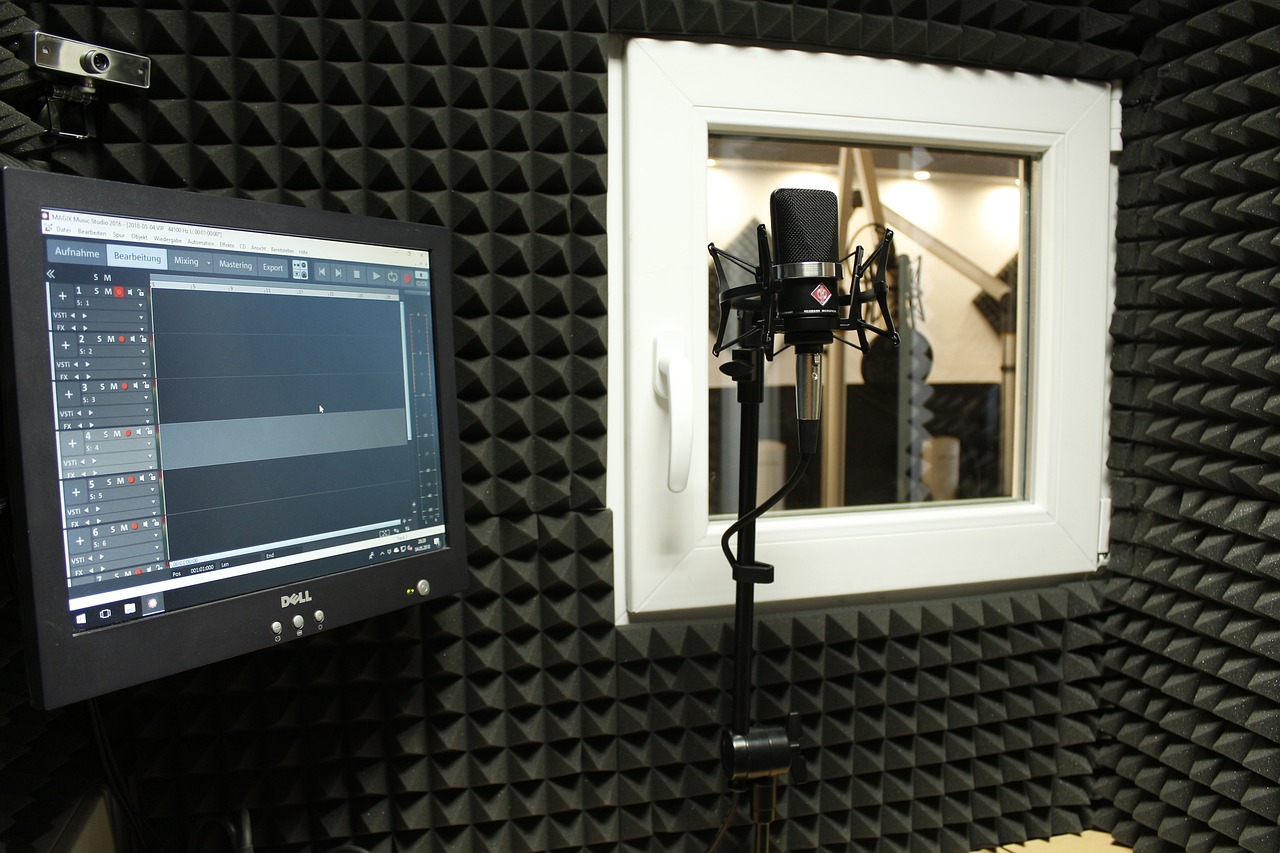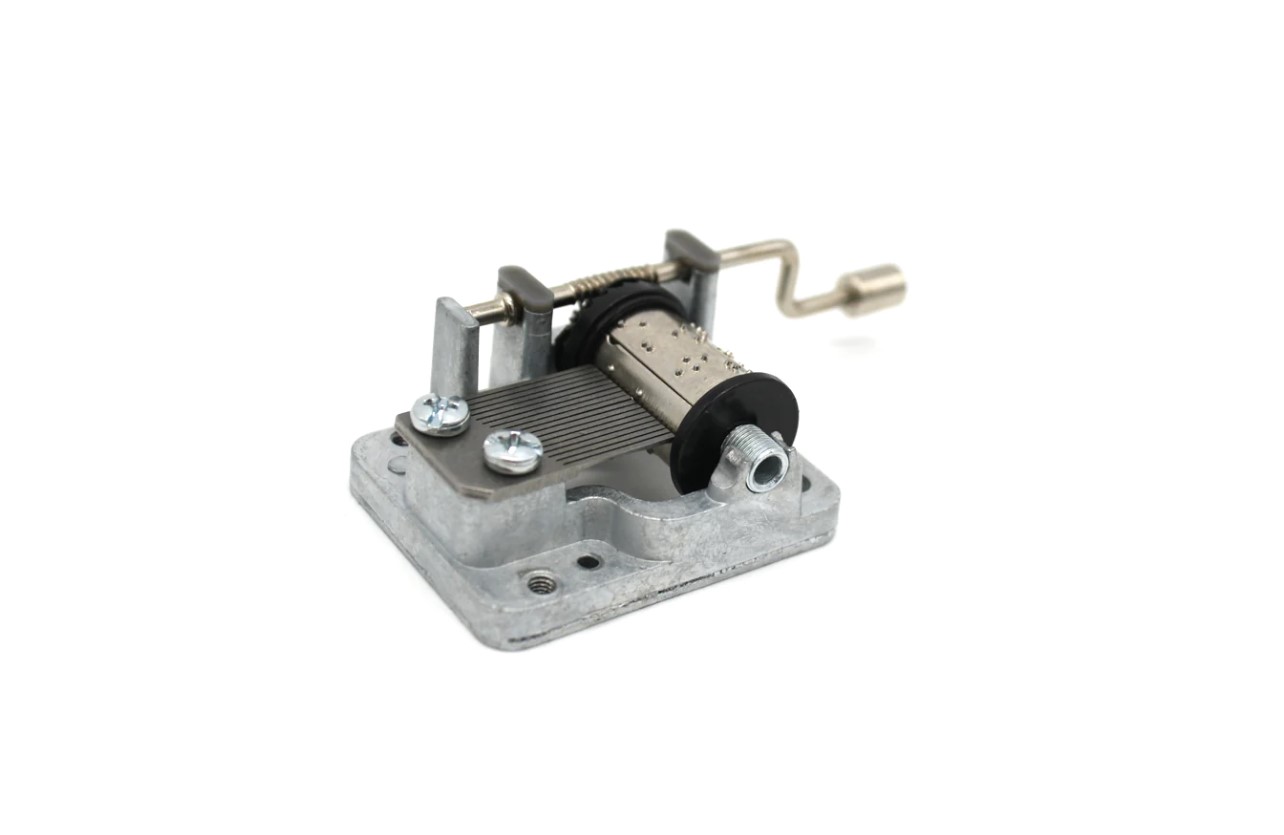Home>Production & Technology>Sound>How To Make Room Sound Proof


Sound
How To Make Room Sound Proof
Modified: January 26, 2024
Learn how to make a room soundproof with our expert tips and techniques. Block out unwanted noise and create a peaceful environment.
(Many of the links in this article redirect to a specific reviewed product. Your purchase of these products through affiliate links helps to generate commission for AudioLover.com, at no extra cost. Learn more)
Table of Contents
Introduction
Many homeowners and renters dream of having a peaceful and quiet environment within their living spaces. However, in reality, unwanted noise from traffic, neighbors, or even the busy street can often disrupt this tranquility. That’s where soundproofing comes in.
Soundproofing is the process of reducing or eliminating the transmission of sound from one area to another. It involves implementing various techniques and materials to create a barrier that prevents sound from entering or leaving a room. By soundproofing a room, you can enjoy a quieter and more peaceful atmosphere, free from the disturbances of unwanted noise.
Understanding the principles and methods of soundproofing is essential to effectively address the noise issues in your home. In this article, we will explore different approaches to soundproofing, ranging from identifying problem areas to implementing specific strategies for sound reduction.
Whether you live in an apartment building with thin walls, a busy neighborhood, or a noisy city, these soundproofing techniques can help you create a more serene and quiet living space. Let’s dive into the world of soundproofing and discover how to make your room a sanctuary of peace and tranquility.
Understanding Soundproofing
Before delving into the specific techniques and materials used in soundproofing, it’s important to understand the basics of how sound travels and how it can be controlled. Sound travels in waves, vibrating through the air or other materials until it reaches our ears. The key to effective soundproofing lies in disrupting or absorbing these sound waves.
When it comes to soundproofing, there are two main objectives: blocking sound transmission and absorbing sound. Blocking sound transmission involves creating barriers that prevent sound waves from passing through. Absorbing sound, on the other hand, involves using materials that soak up sound waves, reducing their intensity and preventing them from bouncing around the room.
There are various factors to consider when determining the level of soundproofing needed for a room. These include the type of noise you’re trying to block or reduce, the structure of the space, the materials used, and the budget you have available.
It’s also crucial to understand that achieving complete soundproofing is nearly impossible. However, with the right techniques and materials, you can significantly reduce the amount of noise entering or leaving your room.
When considering soundproofing options, it’s important to keep in mind that different materials and techniques are more effective for specific types of noise. For example, if you’re dealing with airborne noise such as voices or music, you’ll need different soundproofing strategies compared to impact noise like footsteps or door slams. Tailoring your approach to the type of noise you’re dealing with will yield the best results.
Soundproofing can have numerous benefits. It not only allows for a more peaceful living or working environment but can also improve concentration, productivity, and overall well-being. Whether you want to create a quiet space for relaxation, improve the acoustics of a home theater, or minimize noise disturbance in a home office, understanding the principles and techniques of soundproofing is essential.
Now that we have a general understanding of soundproofing, let’s move on to identifying specific problem areas in your room and how to address them.
Identifying Problem Areas
Before you begin the soundproofing process, it’s crucial to identify the specific problem areas in your room. This will help you determine where the majority of the noise is coming from and where you should focus your soundproofing efforts.
Start by spending some time in the room and paying close attention to the sources of noise. Is it coming from outside the room, such as traffic or neighbors? Or is it originating from within the room, such as appliances or electronics?
Next, inspect the room for any gaps, cracks, or openings where sound can easily enter or escape. Common culprits include poorly sealed windows, gaps under doors, and even electrical outlets. These areas allow sound to travel freely and should be addressed during the soundproofing process.
In addition to physical openings, also consider the materials and construction of the walls, floors, and ceiling. Thin walls that lack insulation are more prone to allowing sound to pass through. Similarly, hardwood or tile floors can reflect sound waves, causing them to bounce around and amplify the noise in the room.
Once you have identified the problem areas, you can begin implementing specific strategies to address each one. This may involve sealing gaps, using soundproofing materials, or even rearranging furniture to maximize sound absorption.
Remember, the key to effective soundproofing is to tackle the specific problem areas in your room. By identifying these areas, you can tailor your soundproofing efforts and achieve the desired level of noise reduction.
Now that we know how to identify the problem areas in your room, let’s move on to the next step: sealing the gaps to prevent sound leakage.
Sealing the Gaps
One of the most effective ways to improve soundproofing in a room is by sealing any gaps or openings that allow sound to enter or escape. These gaps can be found around windows, doors, electrical outlets, and even baseboards. Sealing them will help reduce the amount of noise transmission and create a more soundproof environment.
Start by inspecting the windows in your room. Check for any gaps between the window frame and the wall, as well as any cracks in the glass. These areas can be sealed using weatherstripping or silicone caulking. Weatherstripping is a flexible material that can be applied to the window frame to create a tight seal, preventing sound from leaking in or out. Silicone caulking can be used to fill in small cracks in the glass or gaps in the window frame.
Next, focus on the doors in the room. Check the perimeter of the door for any gaps between the door and the frame. Install door sweeps or draft stoppers along the bottom of the door to seal the gap and prevent sound from passing through. Weatherstripping can also be applied to the sides and top of the door to create a tighter seal.
Electrical outlets and light switches can also contribute to sound leakage. Install foam gaskets behind outlet covers to create a barrier against sound. These gaskets are easy to install and provide an effective seal.
Lastly, examine the baseboards and any other areas where the walls meet the floor or ceiling. Apply caulk or acoustic sealant to seal any gaps or cracks. This will help prevent sound from escaping through these openings.
By thoroughly sealing the gaps and openings in your room, you can significantly reduce sound transmission and create a more soundproof space. Remember to pay attention to the windows, doors, electrical outlets, and baseboards to ensure a comprehensive solution.
Now that we have sealed the gaps, let’s explore another soundproofing method: using acoustic curtains and drapes.
Using Acoustic Curtains and Drapes
Acoustic curtains and drapes are an excellent addition to any soundproofing strategy. They are specially designed to absorb sound waves and reduce noise transmission, making them a valuable tool in creating a quieter and more peaceful environment in your room.
Acoustic curtains and drapes are made with heavy and dense materials that effectively block and absorb sound. These materials are often thickly woven or layered with additional soundproofing material, such as mass-loaded vinyl or fiberglass, to enhance their effectiveness.
When selecting acoustic curtains or drapes, consider the level of soundproofing you require, the dimensions and style of your windows, and the overall aesthetic of your room. Look for high-quality options that have been tested and certified for soundproofing capabilities to ensure optimal results.
Once you have your acoustic curtains or drapes, install them properly to maximize their effectiveness. Ensure that the curtains or drapes fully cover the window, extending beyond the edges to prevent sound from leaking around the sides. Use curtain rods or tracks that are sturdy enough to support the weight of the heavy fabric.
In addition to blocking sound, acoustic curtains and drapes can also enhance the overall décor of your room. They come in a variety of colors, patterns, and textures, allowing you to find the perfect match for your style and aesthetic preferences.
It’s important to note that while acoustic curtains and drapes can significantly reduce noise transmission, they may not completely eliminate all external sounds. However, when combined with other soundproofing techniques, such as sealing gaps and using sound-absorbing materials, they can greatly enhance the overall soundproofing effectiveness of a room.
Whether you want to create a peaceful bedroom, a quiet home office, or a cozy entertainment area, acoustic curtains and drapes can contribute to a more serene and enjoyable environment. They provide an effective and visually pleasing solution for reducing noise and creating a soundproof space.
Next, let’s explore the use of soundproofing panels as another method to enhance the soundproofing of your room.
Installing Soundproofing Panels
Soundproofing panels, also known as acoustic panels or sound absorbers, are an excellent solution for reducing noise and improving the acoustics of a room. These panels are specifically designed to absorb sound waves, preventing them from bouncing around and creating echoes or reverberation.
When it comes to soundproofing panels, there are two main types to consider: foam panels and fabric-wrapped panels. Foam panels are made of specially engineered foam that absorbs sound. They are lightweight and easy to install, making them a popular choice for DIY soundproofing projects. Fabric-wrapped panels, on the other hand, are constructed with an inner core of sound-absorbing material, such as mineral wool or fiberglass, and are then covered with an acoustically transparent fabric.
To install soundproofing panels, start by determining the optimal placement in your room. Consider the sources of noise and the areas where sound reflection or echo is most prominent. Common areas for panel installation include the walls, ceiling, and even the back of doors.
Once you have determined the placement, measure and mark the locations for the panels. Use a level to ensure that the panels will be installed straight and evenly spaced. If using foam panels, you can often use adhesive mounting tape or adhesive spray to attach them to the wall. For fabric-wrapped panels, you may need to use mounting brackets or a hanging system. Follow the manufacturer’s instructions for proper installation.
It’s important to note that the number and size of panels you will need depend on the size of the room and the degree of soundproofing you desire. Generally, covering around 25-50% of the wall surface with soundproofing panels can provide a noticeable improvement in sound absorption.
Soundproofing panels not only absorb sound waves but can also enhance the aesthetic appeal of your room. With a wide variety of colors, patterns, and designs available, you can choose panels that blend seamlessly with your existing décor or create a stylish accent to complement the room.
By installing soundproofing panels, you can significantly reduce echoes and reverberations in your space, creating a more acoustically balanced and enjoyable environment. Combined with other soundproofing techniques, such as sealing gaps and using acoustic curtains, soundproofing panels can greatly enhance the overall soundproofing effectiveness of a room.
Next, let’s explore how to soundproof the door, another common source of noise leakage in rooms.
Soundproofing the Door
The door is often a major source of noise leakage in a room. Sound waves can easily pass through gaps around the door, causing unwanted noise to enter or escape. Fortunately, there are several effective methods for soundproofing a door to minimize noise transmission.
The first step in soundproofing a door is to assess the gaps and openings around it. Use weatherstripping or door sweeps to seal the gap between the door and the frame. Adhesive-backed weatherstripping can be applied to the edges of the door to create a tight seal when it is closed. Door sweeps, on the other hand, are installed on the bottom of the door to block the gap between the door and the floor.
If the door has windows or glass panels, consider using soundproofing window film or adding additional layers of window inserts. These can help reduce noise transmission through the glass and provide an extra barrier against sound waves.
Another effective technique for soundproofing a door is to add mass. Mass-loaded vinyl (MLV) is a dense and flexible material that can be applied to the door’s surface to increase its weight and block sound. MLV is available in rolls and can be cut to size and attached using a strong adhesive. It effectively decreases sound transmission through the door, providing a noticeable reduction in noise.
For maximum soundproofing effectiveness, consider adding a soundproofing door blanket or panel. These specialized blankets or panels are designed to absorb sound waves and reduce noise transmission. They can be attached directly to the door using hooks or adhesive strips. Soundproofing door blankets are particularly useful in spaces where temporary soundproofing is desired, such as home recording studios or home theaters.
If you’re looking for a more permanent solution, consider replacing your standard hollow core door with a solid core door. Solid core doors are denser and offer better sound insulation compared to hollow doors. While this option requires more effort and investment, it can significantly improve soundproofing in the long run.
By employing these various soundproofing techniques, such as sealing the gaps, adding mass, and utilizing soundproofing blankets or panels, you can effectively reduce noise transmission through the door and create a quieter and more peaceful room.
Now, let’s explore how to soundproof the windows, another common area where sound can easily enter or escape a room.
Soundproofing the Windows
Windows are a major point of vulnerability when it comes to soundproofing a room. They allow sound waves to easily enter or escape, resulting in unwanted noise disturbances. To minimize noise transmission through windows, there are several effective soundproofing techniques that you can employ.
One of the most straightforward methods for soundproofing windows is by using weatherstripping. Apply weatherstripping tape or adhesive foam strips around the edges of the window frame to create a tight seal when the window is closed. This can significantly reduce the amount of noise that enters or escapes through gaps.
An alternative approach to soundproofing windows is through the use of window inserts. These inserts are custom-made panels that fit snugly inside the window frame and act as an additional sound barrier. They are typically made of acrylic or laminated glass that effectively absorbs and blocks sound waves. Window inserts are easy to install and can provide noticeable improvements in sound reduction.
If you are looking for a more permanent solution, consider replacing your windows with double or triple pane windows. These windows have multiple layers of glass with air or gas-filled pockets in between, which provide enhanced sound insulation. While this option may require a larger investment, it can significantly improve the overall soundproofing of your room.
Another effective approach for soundproofing windows is to use soundproof curtains or drapes. These curtains are specially designed to absorb and block sound waves, helping to reduce noise transmission through the window. They are typically made with dense sound-absorbing materials and feature multiple layers or acoustic lining.
To maximize the soundproofing effectiveness of curtains or drapes, make sure they are properly installed and cover the entire window area. Ensure that the curtains extend beyond the window edges and touch the surrounding walls to prevent sound from leaking around the sides.
If you have blinds or shades installed on your windows, consider adding a layer of soundproofing material, such as mass-loaded vinyl, behind them. This added barrier can help reduce noise transmission and improve the soundproofing capabilities of your window treatments.
By implementing these soundproofing techniques for your windows, you can significantly reduce noise intrusion and create a quieter and more serene environment within your room.
Next, let’s explore soundproofing the floor, an often overlooked aspect of creating a soundproof room.
Soundproofing the Floor
When it comes to soundproofing a room, the floor is an important element to consider. Footsteps, furniture movement, and other impact noises can easily transmit through the floor, causing disturbances to both the occupants of the room and those in adjacent spaces. To minimize this noise transmission, there are several effective methods for soundproofing the floor.
One of the most common ways to soundproof the floor is by using carpet or area rugs. These soft materials act as sound absorbers, reducing the impact noises and footsteps that travel through the floor. Opt for carpet with a thick pad underneath, as this will provide additional sound insulation.
If you have hardwood, tile, or laminate flooring, consider adding a layer of soundproofing underlayment. This material is typically made of foam or rubber and can be installed between the subfloor and the finished flooring. Soundproofing underlayment helps to absorb and reduce impact noise, providing a more soundproof environment.
An alternative option for soundproofing the floor is the use of floor mats or rubber flooring. These materials have excellent sound absorption properties and can effectively reduce noise transmission. Floor mats or rubber flooring can be particularly beneficial in rooms where high levels of impact noise are expected, such as exercise rooms or playrooms.
If you are renovating or constructing a new space, consider incorporating a soundproofing barrier in the floor construction. Mass-loaded vinyl or soundproofing mats can be used as an additional layer between the subfloor and the finished flooring to block and absorb sound waves.
Another technique to consider is decoupling the floor from the structure of the building. This involves using resilient underlayment or floating floor systems that are separated from the main structure, reducing the transfer of vibrations and sound.
If you are in a multi-level building, adding ceiling insulation in the room below can also help reduce noise transmission through the floor. This can involve installing soundproofing material, such as mineral wool or fiberglass batts, in the ceiling to absorb and dampen sound vibrations.
By implementing these soundproofing techniques for your floor, you can significantly reduce impact noise and create a more peaceful environment. Combine these methods with other soundproofing strategies to enhance the overall soundproofing effectiveness of your room.
Now that we have explored how to soundproof different areas of a room, let’s move on to reducing noise from external sources.
Reducing Noise from External Sources
While soundproofing the room itself can greatly improve its acoustic environment, it’s also important to address noise that enters the space from external sources. This can include traffic noise, construction sounds, and other outdoor disturbances that can disrupt the tranquility of your room. Here are some effective methods for reducing noise from external sources:
1. Exterior Soundproofing: Begin by inspecting the exterior of your room or building. Seal any gaps or cracks in the walls, windows, and doors using caulk or weatherstripping. Install soundproofing materials on the exterior of the walls, such as mass-loaded vinyl or soundproof panels, to create an additional barrier against external noise.
2. Window Treatments: Use thick, sound-absorbing curtains or drapes on your windows to reduce noise transmission. Consider using double or triple-glazed windows with laminated glass, as they provide better insulation against external noise.
3. Landscaping: Utilize landscaping elements, such as trees, shrubs, or a noise barrier wall, to help block or absorb outdoor noise. These natural barriers can help mitigate the impact of noise entering your space.
4. Soundproofing Materials: If you have walls or ceilings connecting to neighboring properties, consider using soundproofing materials, such as soundproof drywall or acoustic panels, to minimize noise transmission from adjacent rooms or units.
5. White Noise Machines or Fans: Use white noise machines or fans to generate a continuous and soothing sound that can help mask external noises. These devices create a consistent background noise that can make other sounds less noticeable.
6. Earplugs or Noise-Canceling Headphones: If the external noise is still bothersome, consider using earplugs or noise-canceling headphones. These can provide immediate relief by blocking or reducing the noise entering your ears.
7. Time Your Activities: If possible, schedule noisy activities, such as vacuuming or music playing, during quieter periods of the day to minimize the impact on your space. This can help reduce the overall noise level in your room.
8. Soundproofing Doors and Windows: Apply weatherstripping or door/window seals to prevent noise from seeping in through gaps. Use soundproofing curtains, seals, or window inserts to improve the soundproofing capabilities of your windows.
By implementing these strategies, you can significantly reduce the impact of external noise and create a more serene and peaceful environment in your room.
Now that we have explored various soundproofing techniques, it’s time to wrap up and recap the key takeaways.
Conclusion
Creating a soundproof room can greatly enhance the quality of your living space and provide a more peaceful and tranquil environment. Whether you’re dealing with noisy neighbors, street traffic, or other external disturbances, soundproofing techniques can help minimize noise transmission and create a more enjoyable atmosphere.
Throughout this article, we have explored various methods for soundproofing different areas of a room. We discussed the importance of understanding soundproofing principles and how to identify problem areas. We explored techniques such as sealing gaps, using acoustic curtains and drapes, installing soundproofing panels, soundproofing doors and windows, and addressing noise from external sources.
Remember, effective soundproofing involves a combination of strategies tailored to your specific needs and the type of noise you’re dealing with. By implementing these techniques, such as sealing gaps, using sound-absorbing materials, and blocking sound transmission through windows and doors, you can significantly improve the soundproofing capabilities of your room.
It’s important to note that achieving complete soundproofing is nearly impossible, but by applying these methods, you can greatly reduce noise intrusion and create a more peaceful and quieter space. It’s also essential to find the right balance between soundproofing and maintaining a comfortable and aesthetically pleasing environment.
Remember to regularly inspect your room for potential sound leakage points and make necessary adjustments or improvements. Experiment with different soundproofing techniques and materials to find the combination that works best for your specific situation.
Ultimately, by creating a soundproof room, you can enjoy a quieter and more serene living space, enhance concentration and productivity, and improve overall well-being. So, take the steps to soundproof your room and create the peaceful sanctuary you deserve.











